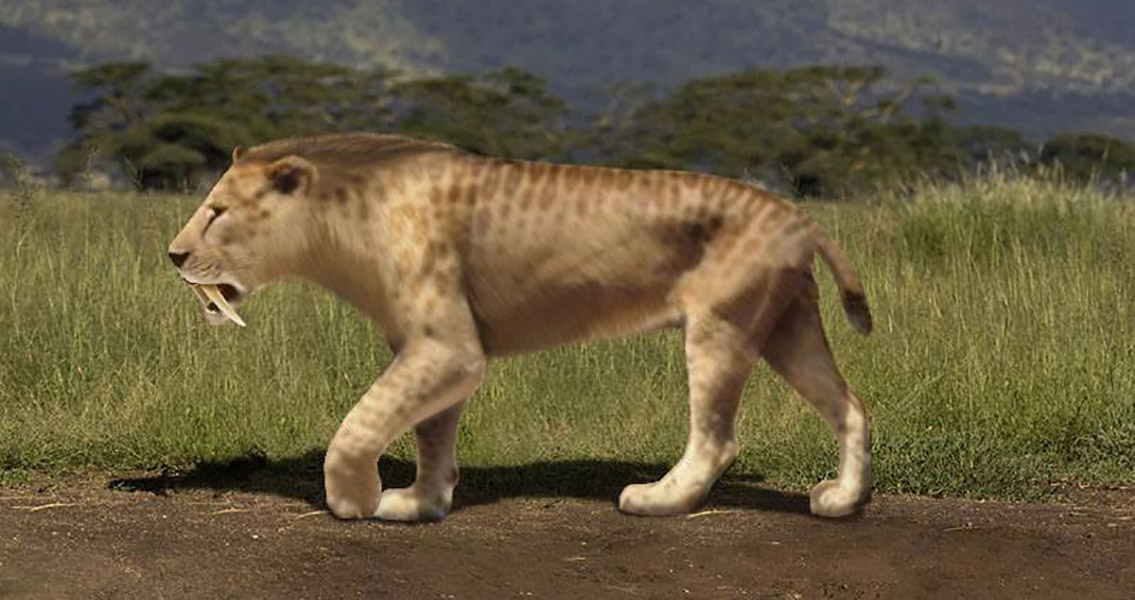<![CDATA[The question: What were the hunting and eating habits of the Smilodon populator (popularly known as the saber-toothed tiger) in South America between 25,000 BCE and 10,000 BCE? The answer, according to a recent study by Professor Hervé Bocherens, is giant sloths and the camel-like ungulate mammals known as Macrauchenia. This is in stark contrast to the belief long-held by paleontologists that the Smilodon, given its size and bone structure, would have hunted in woodlands. With canines up to 30 centimeters long it was believed that hunting forest animals would have afforded the saber tooth cat more hiding places from which to attack. The team of researchers from the Senckenberg Center for Human Evolution and Palaeoenvironment at the University of Tübingen studied the bones of the cats that lived in the Pampas region of Argentina during the Ice Age. Not unlike today’s African lion, the saber-tooth tiger lived and hunted in the dry, open country that was found in South America at that time. By comparing the collagen taken from the bones of a variety of ice age predators, including the Smilodon, a Protocyon (a species of wild dog) and a Panther onca (jaguar), with their likely prey, and then cross referencing this data with the nitrogen and carbon isotopes found in the Pampas region, researchers were able to ascertain the type of environment the animals lived in. The bones from several different saber-toothed cats were discovered together and they all contained similar isotopes, which may indicate that these predators hunted together, although scientists continue to debate if they had a solitary or social lifestyle. Smilodon is perhaps the most famous and best known prehistoric mammal. Although popularly known as the saber-toothed “tiger”, it wasn’t closely related to either the tiger or other contemporary cats. Generally, Smilodon had a more robust build than any cat in existence today, with stronger forelimbs, longer upper canines and a jaw with a bigger gape. Smilodon could be found in the Americas during the Pleistocene epoch, which stretched from 2.5 million to 10,000 years ago. The Smilodon populator which lived in South America is likely the biggest known felid, weighing in at 220 to 400 kilograms (490 to 880 pounds) and standing 120 centimeters (47 inches) tall. The cats coat pattern is unknown, but it’s generally restored artistically with spotted or plain patterns. The saber-toothed tiger went extinct in both North and South America at the same time most megafauna disappeared - approximately 10,000 years ago. Saber-toothed tigers evolved in North America and then spread into South America after the formation of a land bridge connecting the two continents around three million years ago. Interestingly, it seems that the Smilodon’s biggest competitor wasn’t other large cats, but rather the ice age dog, Protocyon, which hunted the same prey. The study was partially funded by the German Research Foundation and was recently published in the journal Palaeogeography, Palaeoclimatology, Palaeoecology. ]]>
Hunting Prey on the Open Plains Was the Saber-Toothed Cat’s Meow
